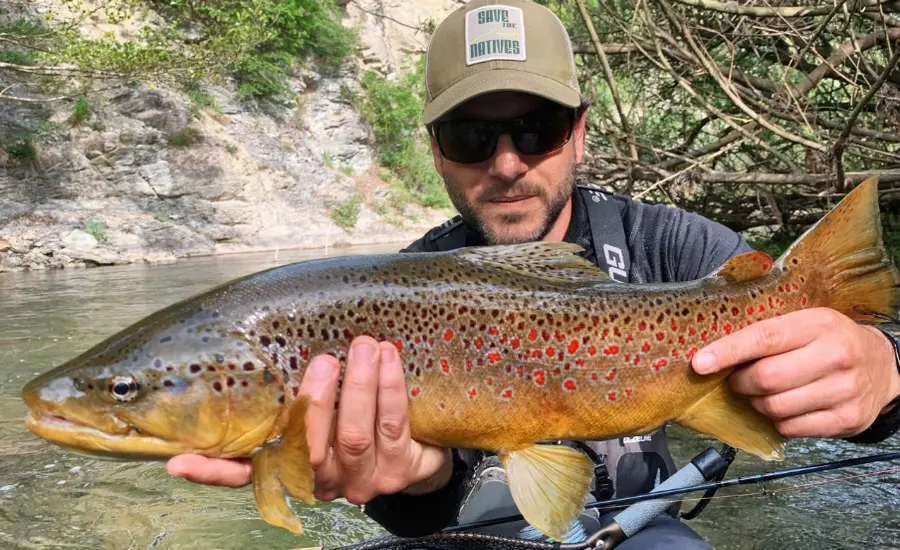Brown Trout

Brown trout can live 20 years, but as with the Atlantic salmon, a high proportion of males die after spawning. Brown trout are active both by day and by night and are opportunistic feeders. While in fresh water, their diets frequently include invertebrates from the streambed, other fish, frogs, mice, birds, and insects flying near the water’s surface. The high dietary reliance upon in-sect larvae, pupae, nymphs, and adults allows trout to be a favoured target for fly fishing. Sea trout are fished for especially at night using wet flies. Freshwater brown trout range in colour from largely silver with relatively few spots and a white belly, to the more well-known brassy brown cast fading to creamy white on the fish’s belly, with medium-sized spots surrounded by lighter halos. The more silver forms can be mistaken for rainbow trout. The continental European strain features a lighter golden cast with some red spotting and fewer dark spots. Brown trout rarely form hybrids with other species; if they do, they are almost invariably infertile. One such example is the tiger trout, a hybrid with the brook trout.

